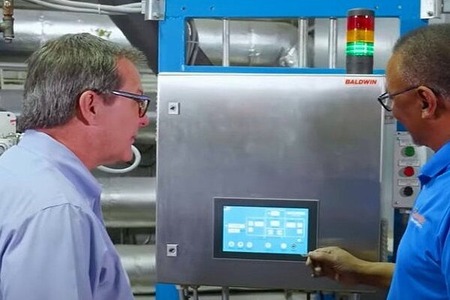
Post-TPP period Vietnam likely to become world’s export center
YarnsandFibers News Bureau 2016-03-03 14:00:00 – HanoiVietnam’s competitive advantage has been strengthened to become the world’s export center, attracting foreign investment flows, including those from Japan. Speaking at the Vietnam-Japan Investment and Trade Promotion Forum held last year, Mukuta Satoshi, senior managing director of Keidanren (Japan Business Federation), said that Japanese firms had invested a total of US$37.3 billion in Vietnam as of the end of 2014, the second highest among all countries and territories investing in the country.
For textile companies, Vietnam’s skilled workers are a plus even when the labor costs are higher than that of Bangladesh and Myanmar.
HCM City is the most important investment destination in Vietnam for Japanese companies, with as many as 765 operating here. Vietnam is considered a gateway for Japan to ASEAN markets. The establishment of the ASEAN Economic Community by the end of 2015 would enhance the role of Vietnam as a business base in the global supply chain strategy.
According to Nikkei Asian Review, Kuraray Trading, an Osaka-based trading house under synthetic fiber maker Kuraray, will spend 300 million yen ($2.51 million) to install a production line for sportswear at an affiliate in Da Nang, the largest city in central Vietnam this year.
This company will produce sportswear using fabric imported from Japan and export the finished products to the U.S. Its factory in Vietnam will account for over 60% of the total sewing work, up from the current 55%.
Kuraray Trading is also considering investing billions of yen in textile operations, such as weaving and dyeing, in Vietnam’s largest city Ho Chi Minh City.
Another Japanese firm - Itochu - has been building its presence in Vietnam since well before the TPP began gathering steam. In 2014, the company established a weaving mill in Vietnam with a monthly capacity of 500,000 meters of fabric.
Japanese Fiber maker Toray Industries has recently been increasing production at a local sewing unit established in Ho Chi Minh City by its trading arm, Chori. The company plans to make the plant a key group production site. Chori ships the finished goods to the U.S. and other markets.
Japanese cotton spinner Shikibo will lower output at its Chinese sewing factory and increase production at a partner plant in Vietnam. The company will soon start producing bedding fabrics at the latter site.
In 2015, many big foreign-invested projects in the field of textile-garments were licensed and implemented.
Binh Duong Province awarded an investment certificate to Polytex Far Eastern Co. Ltd. under Taiwan’s Far Eastern Group to develop a US$274-million clothing project. This project covers 99 hectares at Bau Bang Industrial Zone and produces supporting items for the apparel sector.
It is designed to have an annual capacity of 43,200 tons of polyester, 127 million square meters of knitted fabric and 96 million square meters of cotton fabric. The group plans to invest an additional US$700 million to US$1 billion in the second phase of the project.
Dong Nai Province has approved a US$660-million project of Hyosung Istanbul Tekstil Ltd, which will make industrial fiber at Nhon Trach 5 Industrial Zone. This is a Turkish-registered project but the actual investor is South Korea’s Hyosung Group. Hyosung Vietnam Co. Ltd. has been a familiar face in the textile and garment sector in the province with total registered capital of over US$995 million.
Hong Kong’s Worldon Vietnam Co. Ltd. also got approval to carry out a US$300-million project in the apparel sector in HCM City. The project covers over 50 hectares at Dong Nam Industrial Zone in Cu Chi District.
With huge textile and garment projects, the nation’s manufacturing and processing sector received the highest new FDI commitment of US$4.18 billion in the first half of 2015, making up 76.2% of the total FDI approvals in the period.
Mergers and acquisitions in Vietnam's textile and garment industry have increased in a bid to take advantage of free trade agreements, especially the Trans Pacific Partnership (TPP), according to experts.
According to the Ho Chi Minh City Association of Garment - Textile - Embroidery - Knitting (AGTEK), there was a wave of mergers and acquisitions in the domestic garment and textile sector as local enterprises found they could not fulfill requested orders due to their limitations in capital.
Pham Xuan Hong, Vice Chairman of the Vietnam Textile and Apparel Association (Vitas), said that medium- and large-sized enterprises have maintained stable production and business, but small-sized firms have faced many difficulties in their business. Therefore, recently, many small textile and garment companies have sold their workshops and machines and entered other sectors.
In addition, some local enterprises have sold part of their factories to foreign investors, including Chinese firms who have developed a system of processing and production for export products in Vietnam to take advantage of the TPP deal.
Nguyen Van Hoan, former head of the Hanoi Industrial, Textile, Garment and Fashion College, said foreign investors had met difficulties in expanding their production in Vietnam because some provinces and cities have limited foreign investment in the garment and textile sector due to concerns about environmental pollution.
This has prompted foreign investors to purchase local textile and garment companies that already have production lines and employees.
However, the Ministry of Planning and Investment said that management offices carefully weighed requests before issuing investment licences for large textile and garment projects, since textile, fiber production and dyeing projects often cause environmental problems.
In 2015, Vietnam has issued investment licences for 30 textile and garment projects while foreign investment in the industry is expected to continue increasing in the near future.
In 2016, part of the 300 million USD provided by the Indian government will include investments in projects to manufacture textile and garment materials in Vietnam, as part of the cooperation between the governments of Vietnam and India.
The garment and textile sector is viewed as one of the industries which will benefit the most from TPP. According to the industry’s insiders, Vietnam’s garment and textile export turnover to countries joining the TPP agreement was expected to double in the time to come.
By participating in TPP’s negotiations, Vietnam hopes to gain many benefits thanks to growing demand for apparel and footwear in the agreement’s member countries.
However, experts said that it was not easy for local enterprises to effectively utilize opportunities to be brought by the TPP. One of the provisions in the TPP, known as the “yarn forward†rule, would require a member country that exports apparel to other TPP markets to use textile that was either made locally or imported from other TPP member countries.
Signing on to the TPP meant that Vietnamese garment exporters would technically no longer be able to import their materials if they hoped to benefit from lower tariffs under the TPP.
According to experts, Vietnam’s apparel industry has for some time been concerned that it would face difficulties in complying with the rules of origin in the TPP, given that this would require the industry to make significant capital and technological investments up front.
The US market, the largest importer of Vietnam’s garment products, is a good example. When the TPP came into effect, the tariffs on Vietnamese garment products could be lowered to nearly zero from the current 17.5%.
US Fashion Industry Association President Julia K Hughes said that many US companies were willing to seek supply sources from nations joining the TPP agreement once it took effect. Vietnam was ranked highest in terms of its ability to draw new businesses and Hughes advises Vietnam to utilize its new opportunities.
Experts predict that the TPP would likely raise Vietnam’s garment and textile exports to the US to US$55 billion by 2025.
Market Intelligence
Ask for free sample Report

experience
Customer Base
dedicated team
Countries Served Worldwide









